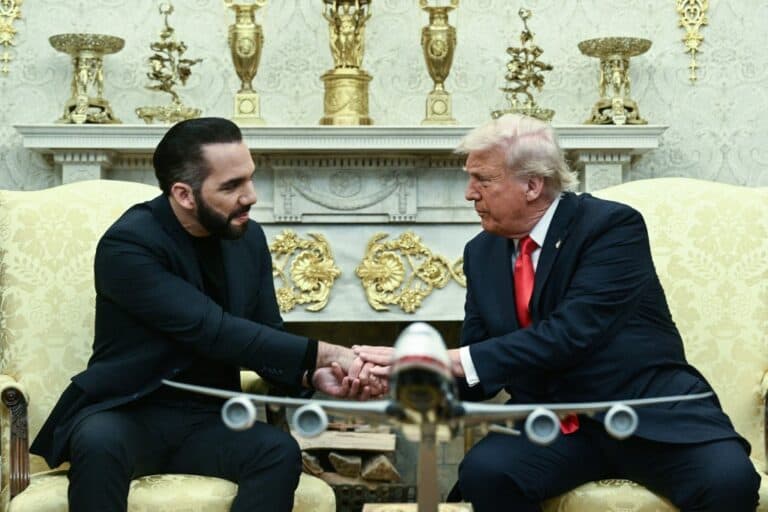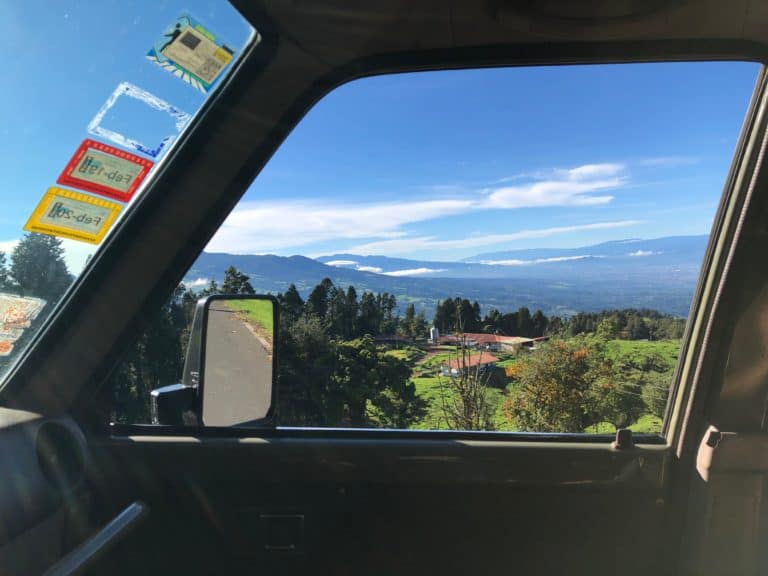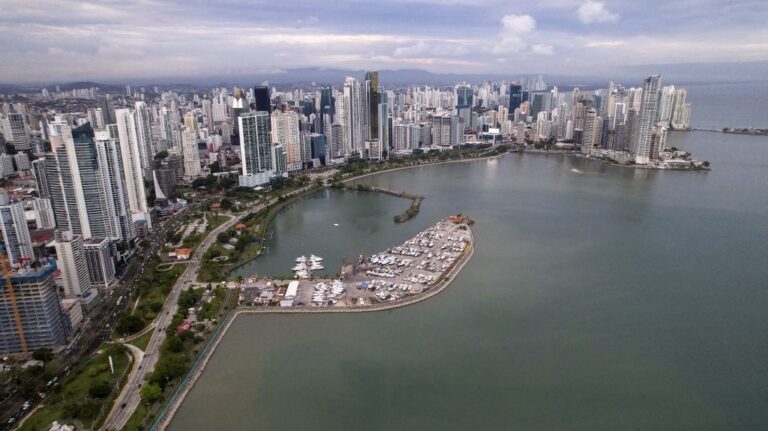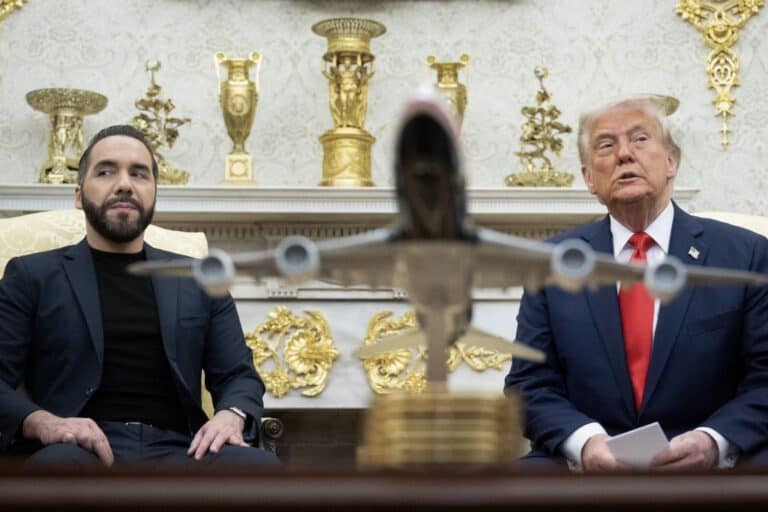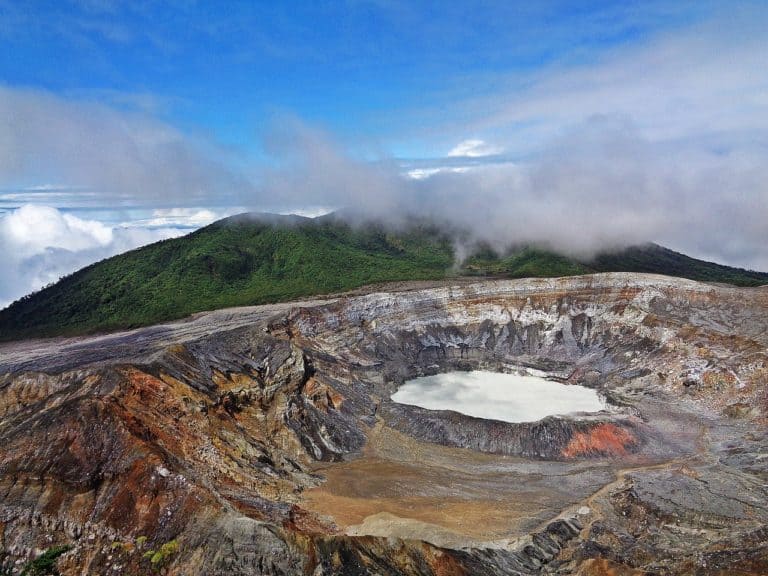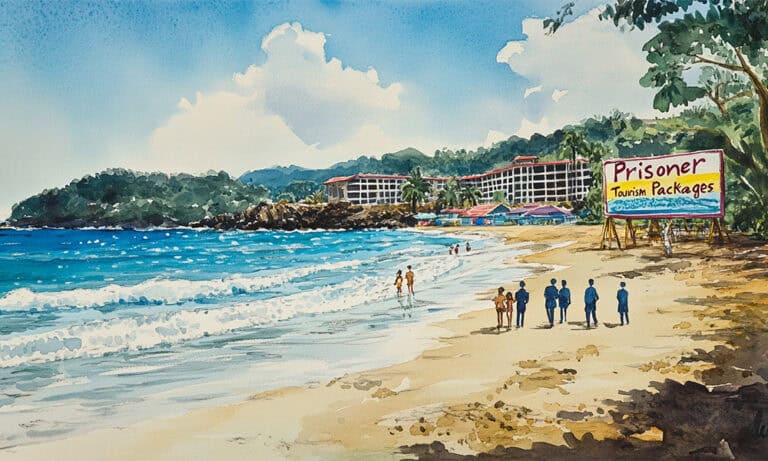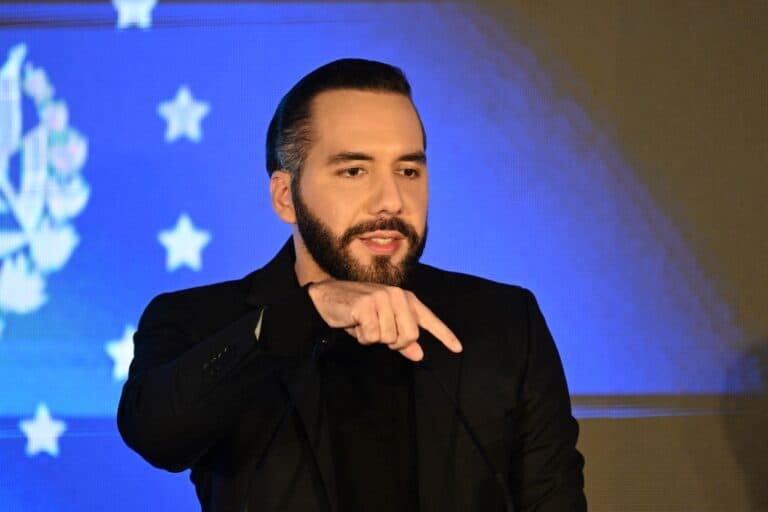The deportation of migrants detained in the United States to El Salvador and their imprisonment in a mega-prison for gang members is creating “a black hole” without legal protections, warn human rights advocates concerned about the anti-immigration alliance between the two countries. On Monday at the White House, the presidents of El Salvador, Nayib Bukele, and of the United States, Donald Trump, cemented an alliance that allows Washington to continue sending migrants to El Salvador—accusing them of being criminals, without providing evidence.
At least 265 migrants, the vast majority of whom are Venezuelans, have been deported from the United States to El Salvador since March and incarcerated at the Terrorism Confinement Center (Cecot). Considered the largest prison in Latin America, the Cecot has a harsh regime of detention. It houses around 15,000 Salvadorans accused of belonging to violent gangs, and now also Venezuelan migrants. They are cut off from communication and cannot receive visits.
“What is being attempted here is the creation of a Guantánamo on steroids (…) a black hole where there is no legal protection for the people there, and that is extremely serious,” warned Juan Pappier, the deputy director for the Americas at the human rights NGO Human Rights Watch (HRW).
Trump said on Tuesday that he would “love” even to send American citizens who commit violent crimes to the Cecot. “Those who grew up and something went wrong and hit people on the head with a baseball bat and push people in the subway,” he said, according to excerpts from an interview he gave to Fox News in Spanish, a program scheduled to air on Tuesday.
HRW interviewed 40 family members of the more than 200 migrants deported to El Salvador and concluded that they are targets of “forced disappearance and arbitrary detention.” As the principal ally in Latin America, Bukele was received with honors at the White House for collaborating on Trump’s hardline policy against migrants.
“We are very eager to help,” Bukele stated, to which Trump replied: “You are helping us. We appreciate it.”
Administrative error
The most notorious case reported by activists is that of Salvadoran migrant Kilmar Ábrego García, who is married to an American. He was arrested in the United States on March 12 and expelled three days later to El Salvador along with another 230 people. The Trump administration accuses Ábrego of belonging to the MS-13 gang, declared a “terrorist organization” by Washington. However, it has provided no evidence.
Ábrego had been living in the United States under a protected legal status since 2019, when a judge ruled that he should not be deported because he was in danger in El Salvador. Washington acknowledged before a court that his expulsion was an “administrative error.”
An American judge ordered that he be returned to the United States, but both governments refuse to comply. Judge Paula Xinis scheduled a new hearing on the case on Tuesday, after unsuccessfully asking the government to inform on “the current whereabouts and status” of Ábrego, as well as what it is doing to “facilitate his return.”
Potentially indefinite
According to HRW, the detention of the deportees at the Cecot—the majority accused of being members of the Venezuelan criminal group Tren de Aragua “appears to be completely arbitrary and potentially indefinite.” per interviewed family members of detainees in Venezuela who insist that they committed no crime that would justify incarceration.
Venezuelan Alexis de Hernández, the mother of 31-year-old Andry Hernández Romero, said that her son “is unjustly imprisoned” and that he was detained “just for having some tattoos.” The U.S. government claims that the tattoos demonstrate his belonging to the Tren de Aragua gang, but experts note that the gang does not use tattoos to identify its members.
“In El Salvador, the government calls the detention of innocent people a ‘margin of error’, but these are not errors at all,” said Noah Bullock, director of the NGO Cristosal, on his X account. On the streets of San Salvador, some criticize the deportations, while others defend Bukele’s hardline approach, which is very popular in his country due to his war against gangs.
Washington is sending migrants to El Salvador “just for being marked (tattooed),” lamented 32-year-old truck driver Ricardo Rosales. When the United States is “distancing” itself from many countries, “El Salvador is drawing closer” and that will be of “great benefit,” assured 73-year-old retired engineer Manuel Urrutia.
Bukele announced, as an achievement of his visit to the White House, the signing of an agreement for El Salvador to join the Global Entry program, which will allow Salvadorans with visas to “enter the United States quickly.”

